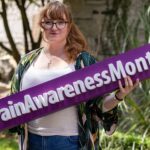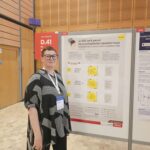Chronic Pain Ireland Statement on Herpes Zoster (Shingles) Vaccine Report
|
Chronic Pain Ireland will continue to advocate and raise awareness in respect of the incidence and severity of shingles which increases with age, with most cases occurring in people over the age of 50 years. People who are immunocompromised are also at an increased risk of shingles. The most common complication of shingles is post-herpetic neuralgia (PHN) which is experienced as nerve pain that persists after the shingles rash has healed. It can be more common and more severe in older people than in younger people. After the age of 50 years, about 20% of patients with shingles will develop post-herpetic neuralgia (PHN).
Older news – 21/03/24
Decision on whether to add shingles vaccination in the adult immunisation schedule in Ireland – Public Consultation NOW CLOSED
Chronic Pain Ireland, as part of the multidisciplinary Expert Advisory Group (EAG), collaborated in the assessment conducted by HIQA at the request of the Department of Health, following a recommendation from the National Immunisation Advisory Committee (NIAC). The final assessment will provide advice to the Minister for Health to inform a decision on whether to include shingles vaccination in the adult immunisation schedule in Ireland.”
Chronic Pain Ireland are calling for the general public and those within our community to take part in this public consultation and provide feedback.
For more information and to provide feedback visit HIQA https://www.hiqa.ie/reports-and-publications/consultation/herpes-zoster-shingles-vaccination-health-technology
HIQA Press release available: https://www.hiqa.ie/hiqa-news-updates/hiqa-launches-public-consultation-assessment-adding-shingles-vaccine-national
What is Shingles?
Shingles is a viral infection caused by the same virus that causes chickenpox. Shingles causes a painful, blister-like rash. While some people experience severe disease or continue to experience pain for months, or even years, for most people, symptoms normally clear up within a month.
The incidence and severity of shingles increases with age, with most cases occurring in people over the age of 50 years. People who are immunocompromised are also at an increased risk of shingles. The most common complication of shingles is post-herpetic neuralgia (PHN) which is experienced as nerve pain that persists after the shingles rash has healed. It can be more common and more severe in older people than in younger people. After the age of 50 years, about 20% of patients with shingles will develop post-herpetic neuralgia (PHN).















